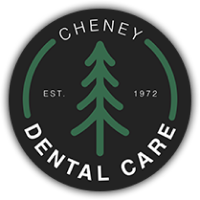Solutions For Half-Broken Teeth

A chipped or cracked tooth can be a source of both physical discomfort and emotional distress. Whether it’s a minor fracture or a half-broken tooth, knowing your treatment options can help you navigate this situation with confidence. Here’s a guide to understanding half-broken teeth, exploring treatment possibilities, and ensuring a healthy, restored smile.
What Causes Half-Broken Teeth?
Several factors can contribute to a half-broken tooth:
- Biting into complex objects: Chewing on hard candies, ice, or nuts can put excessive pressure on teeth, leading to cracks or fractures.
- Trauma: Accidents, falls, or sports injuries can cause physical impact, resulting in chipped or broken teeth.
- Teeth grinding (bruxism): The constant friction from grinding teeth can weaken enamel and make them susceptible to cracks.
- Large existing fillings: Over time, large fillings can weaken the tooth structure, increasing the risk of cracks or breaks.
Comparison Between Half Broken Teeth & Chipped Teeth:
The extent of the damage determines the category. A chipped tooth typically involves a small piece of enamel breaking off. In contrast, a half-broken tooth signifies a more significant fracture that may expose deeper tooth layers like dentin or even the pulp (the central part containing nerves and blood vessels).
Half Broken Teeth Treatment:
The best course for a half-broken teeth treatment in Cheney, WA, depends on the severity of the fracture, the location of the break, and the presence of any pain or sensitivity. Here’s a breakdown of common options:
- Dental Bonding: For minor chips or cracks that don’t affect the dentin or pulp, dental bonding offers a quick and cost-effective solution. A tooth-colored resin material is used and shaped to restore the tooth’s shape and appearance.
- Dental Crowns: For more severe breaks that involve the dentin layer or compromise the tooth’s structural integrity, a dental crown is recommended. A personalized cap is placed over the entire remaining tooth structure, restoring strength, function, and aesthetics. This is also suitable for half broken molars treatment in Cheney, WA, that require extra durability for chewing.
- Root Canal Therapy: If the fracture exposes the pulp, the inner chamber containing nerves and blood vessels, a root canal becomes necessary. This procedure involves removing the infected pulp, cleaning the canals, and sealing the tooth to prevent future infection and preserve the tooth. A crown is usually placed following root canal therapy to restore strength and aesthetics.
- Tooth Extraction: In rare cases, If a tooth is extensively damaged and cannot be repaired, extraction may be the only viable option.
Half Broken Molar Treatment:
Molars, the larger chewing teeth in the back of the mouth, bear significant biting forces. Half-broken molar treatment often follows the same principles as treatment for front teeth. However, due to their function, molars require even more durability and stability in restorations. Dental crowns are a popular choice for half-broken molars as they provide the necessary strength and protection for chewing.
When To Seek Professional Help On This Matter?
Any kind of tooth fracture, especially a half-broken tooth, warrants a visit to your dentist. Here’s when to seek immediate attention:
- Severe pain or discomfort
- Sensitivity to hot or cold
- Bleeding or swelling around the tooth
- Difficulty chewing
Living with a Half-Broken Tooth:
While some minor chips might not cause immediate problems, leaving a half-broken tooth untreated can lead to complications like:
- Increased risk of infection: Exposed dentin or pulp is vulnerable to bacteria, potentially leading to an abscess (a pus-filled pocket at the root of the tooth).
- Further tooth damage: A fractured tooth is more susceptible to breaking further with normal chewing forces.
- Pain and sensitivity: Exposed nerves can cause pain and sensitivity to hot, cold, or sweets.
After extensive research and consultation with dental professionals, it is clear that there are limited options available for individuals suffering from half-broken teeth. The recommendations put forth by experts include temporary measures such as using dental cement or dental wax to protect the exposed area, but ultimately, a permanent solution such as a crown or veneer may be necessary. The emotional distress of having a compromised smile can weigh heavily on one’s self-esteem, leading to feelings of insecurity and shame. It is crucial to address this issue promptly in order to avoid further damage and potential complications. While the road ahead may be difficult, seeking professional treatment and care is essential in restoring not only the physical appearance of your teeth but also your confidence and overall well-being.
A half-broken tooth doesn’t always have to be a permanent source of worry. By seeking professional dental care promptly and exploring accurate treatment options, you can restore the health, function, and aesthetics of your smile.
Frequently Asked Questions
Unfortunately, no. Unlike minor scrapes on the skin, teeth lack the ability to regenerate lost enamel or dentin. Leaving a half-broken tooth untreated can lead to further damage, infection, and even tooth loss. Seeking professional dental care is crucial to restore the tooth and prevent complications.
Dental bonding is a good option for minor chips or cracks that don’t affect deeper tooth layers. A tooth-colored resin is used to repair the damage. Crowns offer a more durable solution for larger fractures or breaks that involve the dentin layer or compromise the tooth’s structural integrity. A custom-made cap is placed over the entire remaining tooth structure, providing strength and aesthetics.
The treatment duration depends on the chosen method. Dental bonding can often be completed in a single appointment, while crowns usually require two visits – one to prepare the tooth and take impressions and another to place the permanent crown. Root canal therapy might involve multiple appointments depending on the complexity of the case.
Modern dentistry prioritizes patient comfort. Most procedures, including dental bonding, crown placement, and root canal therapy, involve local anesthesia to minimize discomfort. You might experience some minor post-procedural sensitivity, but your dentist can recommend pain relievers to manage it.

